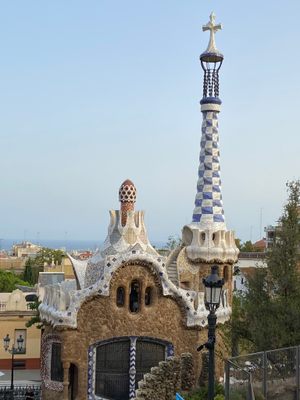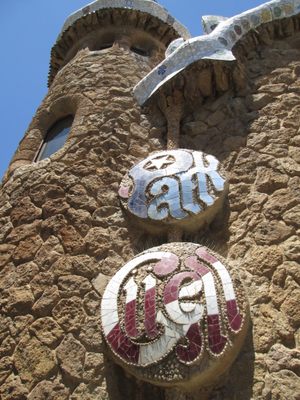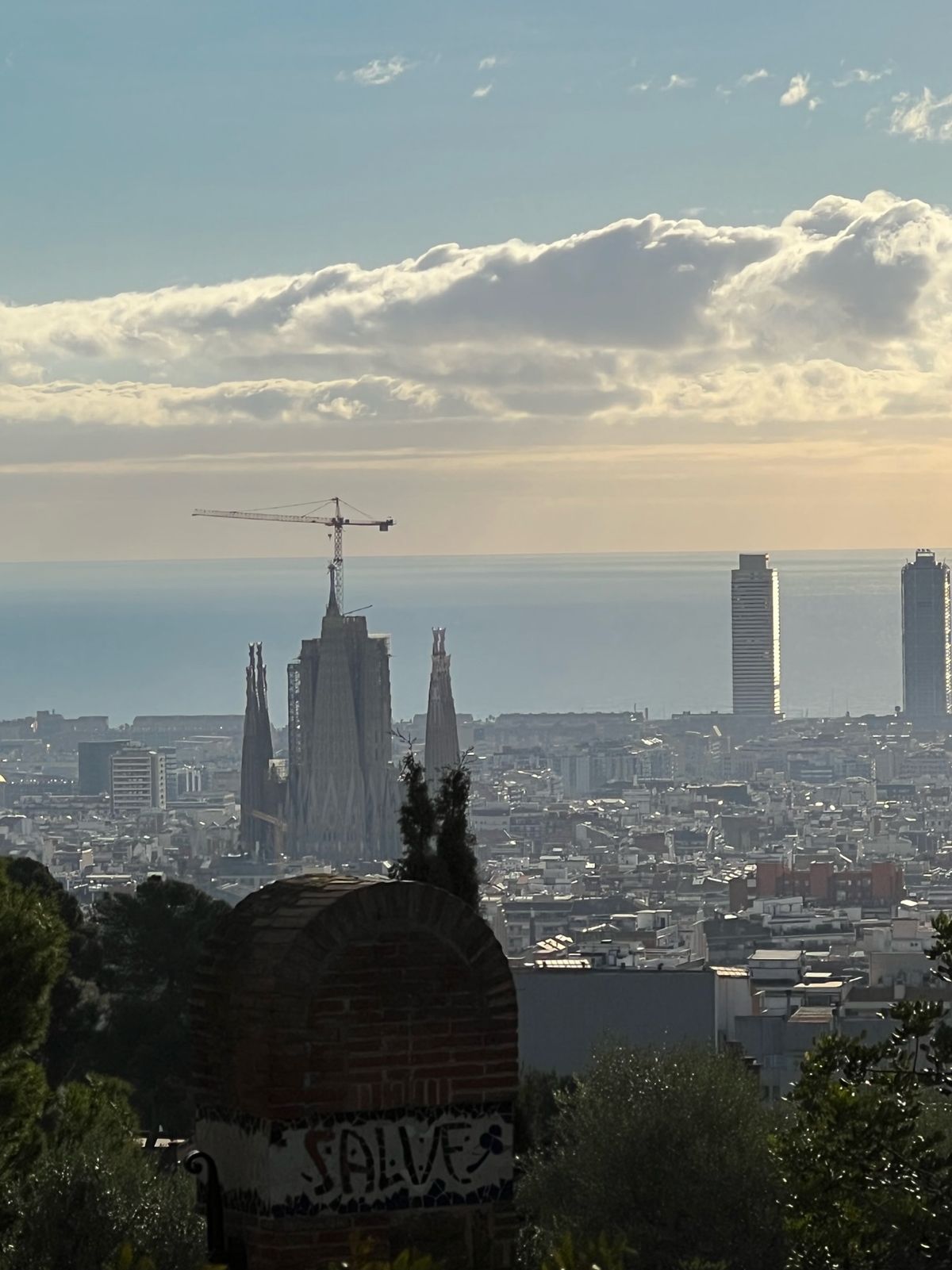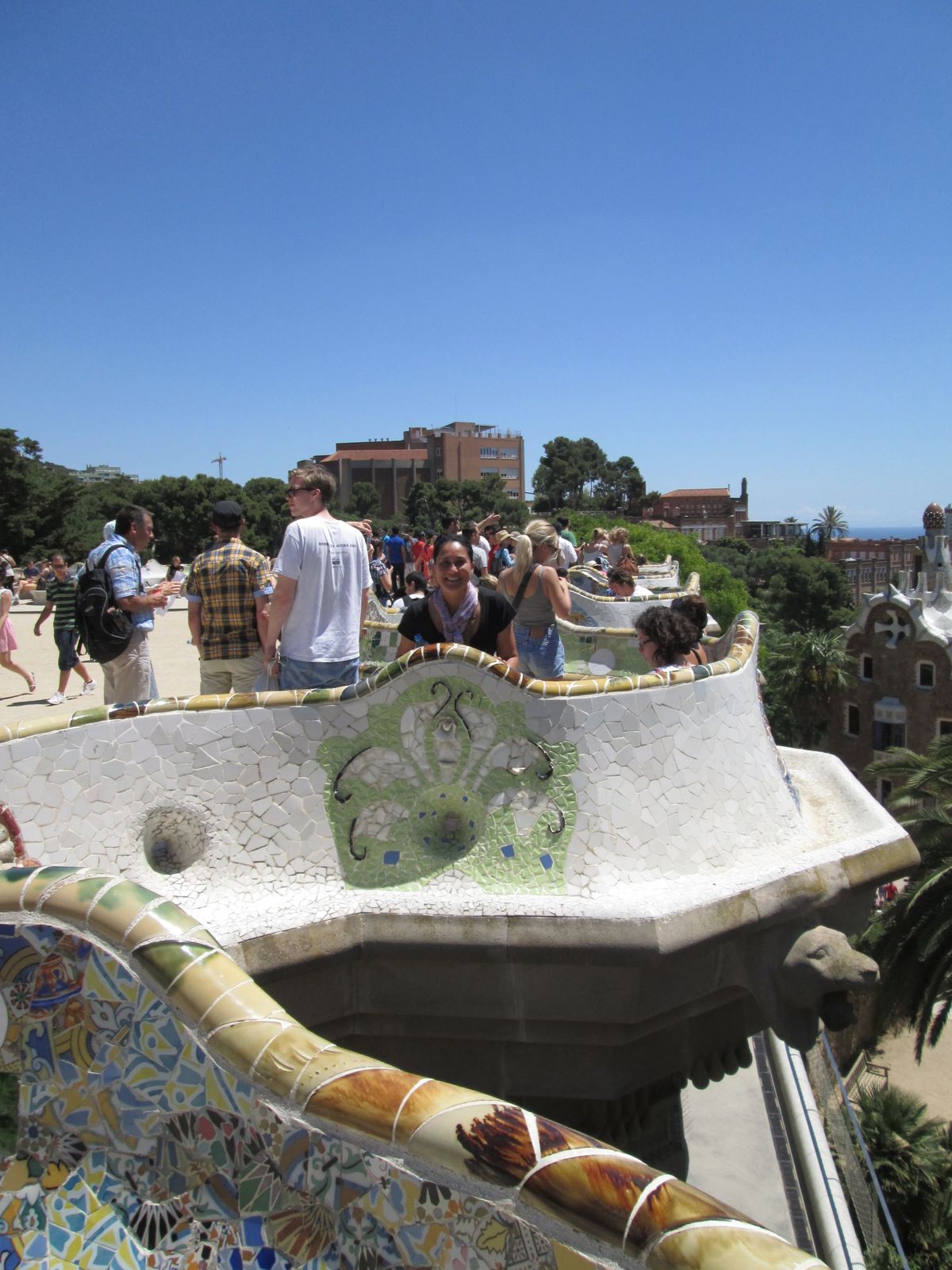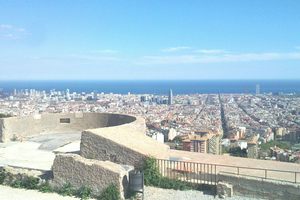About
At Park Güell, stone, tile, plants, and Mediterranean skies magically come to life on a mountainside perch designed by Barcelona's resident architectural genius, continuing to delight adults and children alike.
Built between 1900 and 1914 as part of Gaudí's naturalist phase, the project was initially designed as part of Count Eusebi Güell's private city, who envisioned the plot as a self-contained residence with private homes for 60 families. Only later was the failed housing development reimagined as a municipal park, which opened to the public in 1924.
Nestled among Carmel Hill's north face, the main terrace of the park offers sweeping panoramic vistas of the city below – including many of Gaudí's other famous creations peppering the landscape – featuring a scalloped perimeter and a giant bench built to resemble a sea serpent. At the main gate, a giant salamander known as "el drac" or "the dragon" greets visitors upon their approach to the terrace, as they wend their way through a network of Doric columns, some palm-like, that support a pillowy roof inlaid with mosaics. Colonnaded footpaths lead to manicured gardens and trick arboretums, as gracefully curving viaducts and roadways soar overhead. Gaudí's former home, too, now converted into a museum, is easily distinguished by its Pepto-Bismol pink exterior rising four stories tall from the garden grounds.
Despite embodying a purpose entirely separate from its initial conceptualization, Park Güell remains so transcendent in its current form that it was designated a World Heritage Site by UNESCO in 1984, ensuring that the public will continue to find respite in this fantasy world for centuries to come.
Related Tags
Know Before You Go
Access to the Monumental Zone of Park Güell is limited to 400 tickets every half hour. Most of the park is free to get into, but for the Monumental Zone including Plaça de la Natura and Gaudi's famous Salamander, you need to have a timed ticket.
Community Contributors
Added By
Published
February 4, 2016










